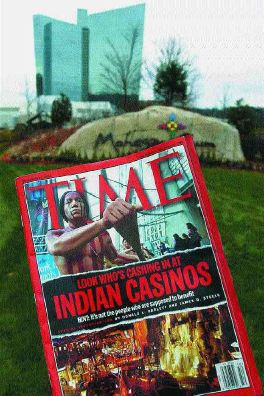Reading Red: Report finds lack of coverageThe good news is, not many negative stories about Native Americans appeared in U.S. major daily newspapers last year.
The bad news is, not many stories of any kind about Native Americans appeared. And when they were written, they hardly used Natives as sources.The mix of topics:
In the five years since the last study, the topics being reported have changed, Azocar said. In 2001, the top Native American topics were reservation life, casinos and mascots. Last year they were arts and entertainment, education and casinos.
Of the 4,684 sources quoted in the stories, just over a quarter were Native American, even in cities that have a high Native population. In fact, having a high Native population didn't necessarily correlate with thorough coverage of Natives.The persistence of stereotypes:
An enduring stereotype Azocar found was one she calls "the Indian as spiritual creature."
Even in stories that had nothing to do with religion, reporters seemed to assign Native sources an aura of mysticism. For example, Native singing was often described as "chanting"--"and it's always 'ancient,'" pointed out an audience member.
One story described a Native elder as having "appeared out of nowhere," "because, you know, we can all do that," Azocar said wryly.Comment: There's definitely been an explosion of arts and entertainment news in the last year or two. In the past, you wouldn't have seen so much press for Native
movies (
Apocalypto,
Bury My Heart at Wounded Knee),
plays (the Native Voices productions,
Wakonda's Dream),
books (
Thirteen Moons,
Flight),
video games (Prey), or
comic books (
SCALPED).
You can read about the original Reading Red report at
Native Journalism: To Tell the Truth.



No comments:
Post a Comment